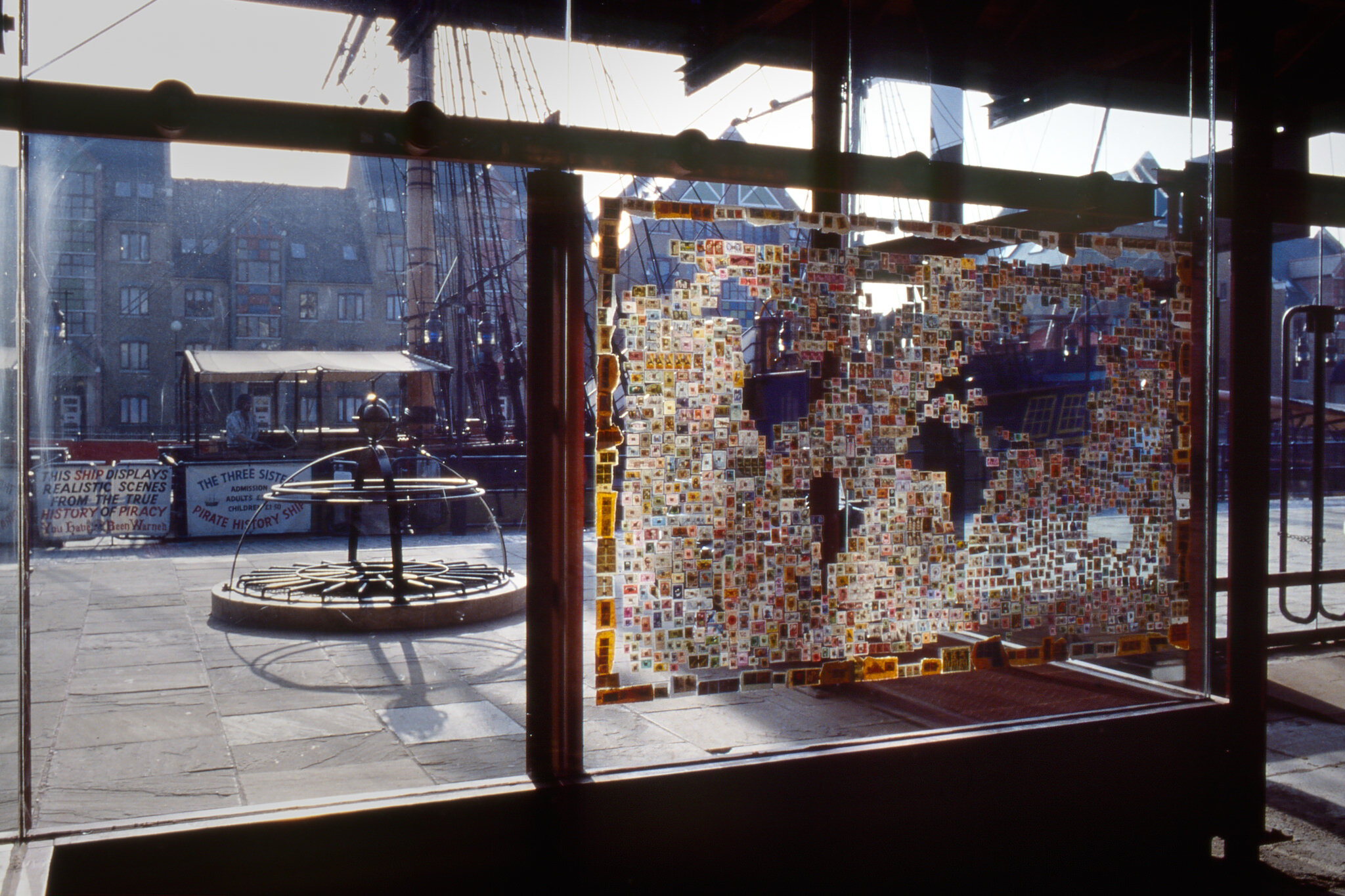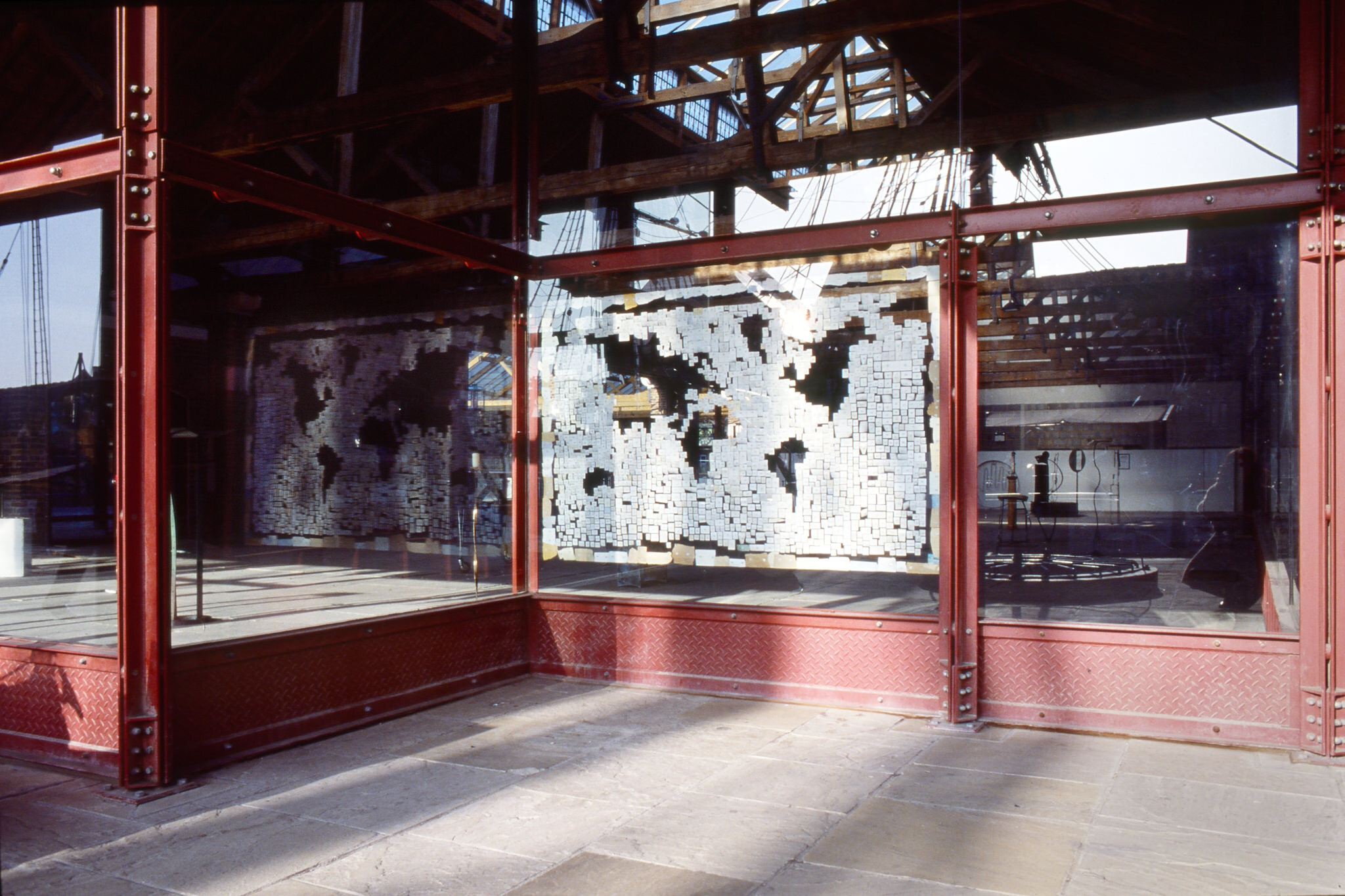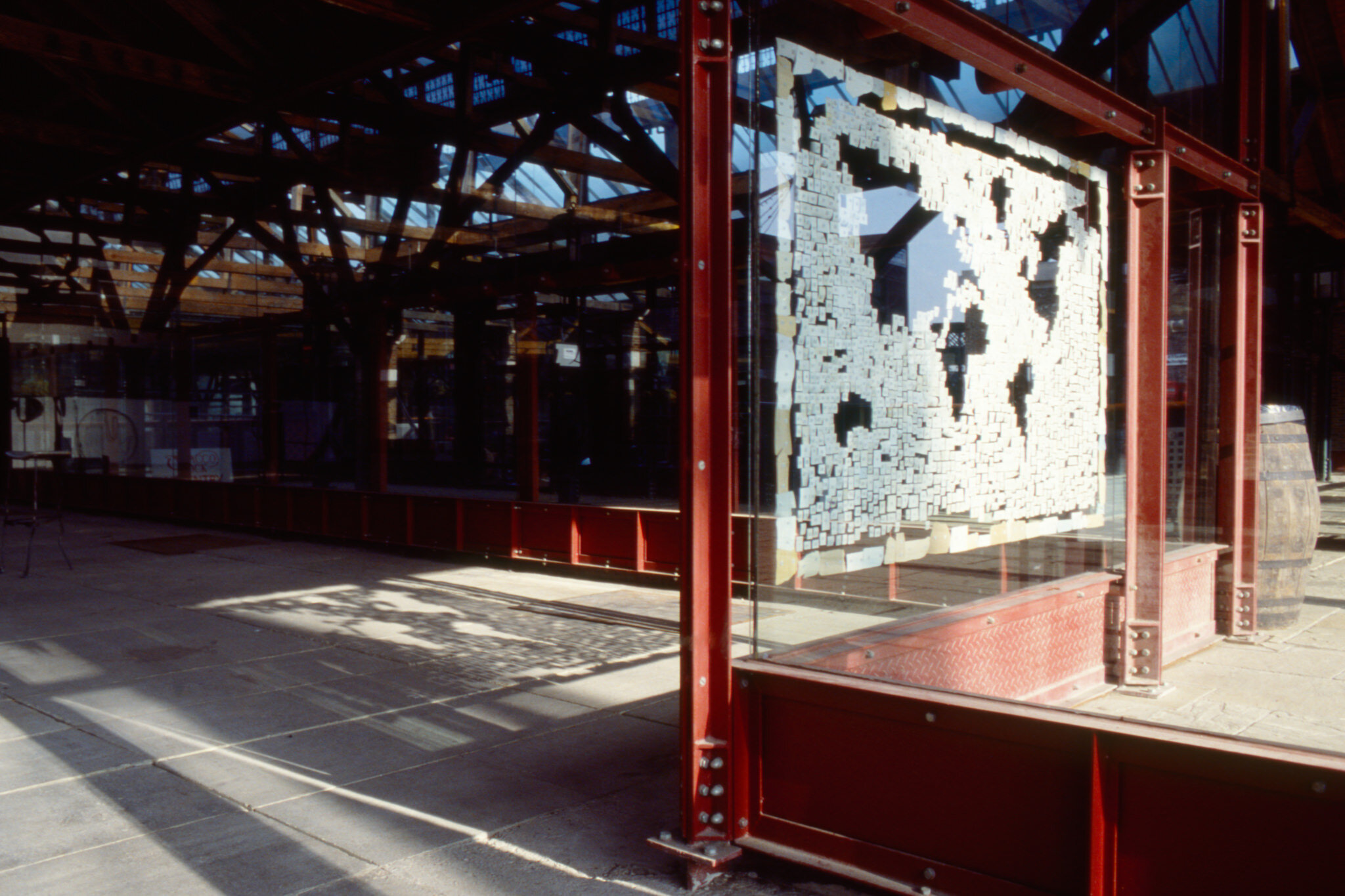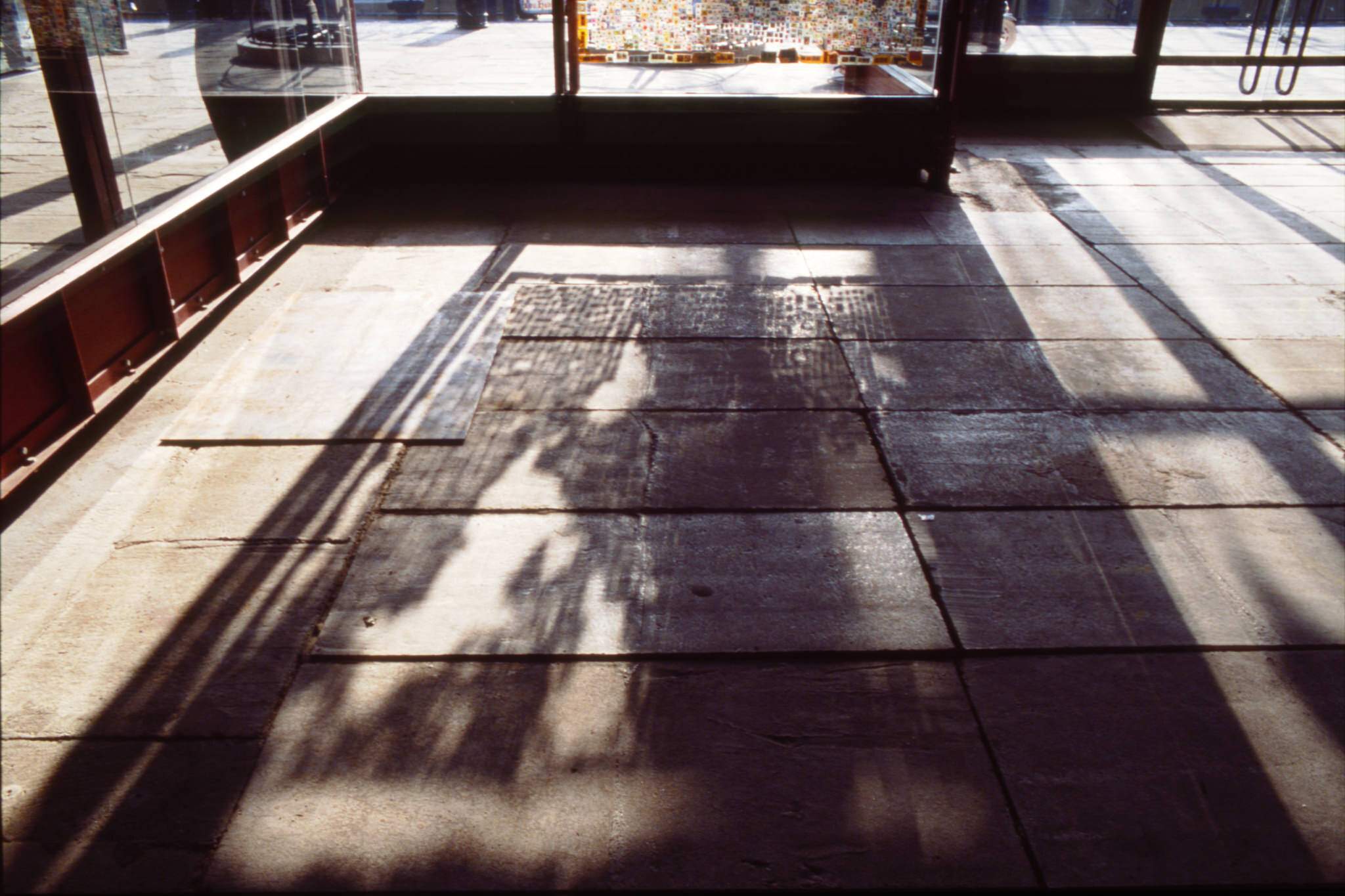Body of Water
Map: Body of Water
Unit G10, Tobacco Dock, The Highway, Wapping, London E1
1991-2
Postage stamps on window glass, 187 x 120 cm approx
Group show with Terry Smith, Simon Spain, Rob Kesseler, Sophie Horton, Andrew Carnie
The following text was written at the time.
The installation was my response to the site: the London Dock at Wapping, once the busiest port in Britain and now, in 1991, a failing up-market shopping complex.
My concern was to acknowledge the previous history of the site and the extent to which this has been and in effect has to be, eradicated from a place reworked in terms of Heritage and consumerism.
The warehousing in the dock was originally entirely enclosed by massive walls to safeguard the contents. Now everything is open to view, with glass walls. The emphasis is on visibility, not secrecy; on shopping and having cash to spare, not working for subsistence wages.
My piece was located on one of the glass walls/windows through which from inside the unit could be seen a replica of a pirate ship in a dry dock: a non-navigable vessel, run aground, confronted with a map which is unreliable. I used the Mercator projection which is familiar and ubiquitous but inaccurate, with its over-privileging in scale of, for example, the British Isles and Europe at the expense of Africa in particular, symptomatic of the Imperialism which underpinned the traffic into and out of the port.
The title refers to my emphasis on the oceans and seas, and their traffic of boats, rather than landmasses. Mail would often be carried along with people and goods. The stamps raise issues of how each country and nationality is represented to the rest of the world (heads of state, queens, kings, the famous, arts, sciences, native flora and fauna). They were picked at random by me as I stuck them to the glass, so countries which were incommunicado can be found side by side, in fact reflecting changes which can occur historically when mutual antagonism is eased.
The stamps are impossibly fragile, tiny pieces of paper and yet also powerful miniature visas enabling the transit of communications between people over vast distances. They represent contact but also the painfulness of separation and waiting: in the days before long-distance telephoning (and of course this still pertains even now for many, many people) it would take months for letters to arrive on the other side of the world, travelling surface-mail.
The map is seen in reverse from the outside of the window, which is accessible at all hours, and 'right way round' from inside the space; yet this reading’s clarity is confused by the busyness of designs on the stamp faces. Sunlight projects an approximation of a stretched Peters projection onto the flagstone floor inside in a fleeting and tenuous revision of Mercator’s version.
Accompanying publication Flotsam Jetsam in an edition of 75 copies with an original artwork by each artist.
Map: Body of Water included in Map, a book to accompany Maps Elsewhere, Beaconsfield, 1996.



